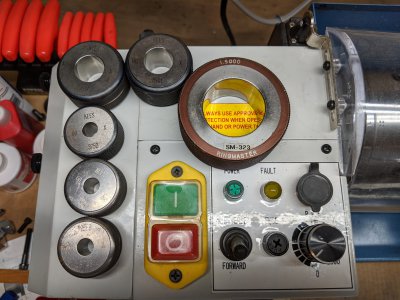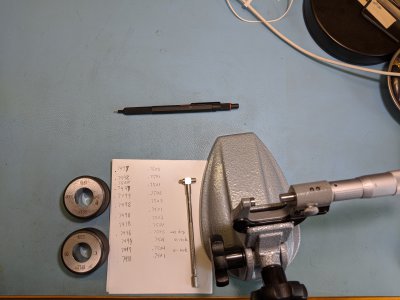And then of course there is the physical surface you are measuring. If you are turning with a boring bar, your surface is a series mountain tops & valleys under magnification. And some of the mountain tops have 'snow on top' LOL (micro burrs). So at best your telescoping gauges are running across the tops. That's a 'measurement' all right, but may not be indicative of your final desired surface for precision work. Power feed turning or boring is no different that fine pitch threading although we don't think of it that way. The tool tip for turning has a larger radius so the overlapping scallops help keep the peak to crest undulations minimized, but eliminated.
I have a ritual on my final 2 passes where I dial in the exact same DOC (say 0.005") and I switch to 2 finer feeds. This does a few things. The DOC gives some consistency to the combination of material, tool & diameter. Sneaking up thou by thou can work on certain materials but not others especially if they like to work harden. You are giving the boring bar an opportunity to spring pass (relieve bending in the bar). Different feed also cuts across the hilltops as opposed to just deepening the same grooves like a record player needle if you keep the same feed. Also if you have been doing some roughing just prior the part temperature may well till be elevated. It may measure differently 5 minutes later as it cools.
To get the technique down, just find a bearing race & measure many times. The surface is hard & likely quite precise. So if you are varying +/- 0.001" its probably some combination of technique, gages or micrometer.
When you start getting into half thou or tenths you might be exiting the realm of turning & should be lapping. Even jaw/collet pressure can have a proportionately large impact depending on the material & wall thickness etc.


